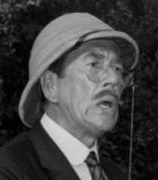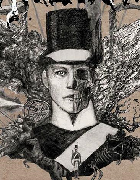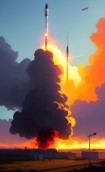|
Pz.Sfl.IVc Queue: Jagdpanzer 38(t) "Hetzer", Soviet tank winter camo, Semovente L40 da 47/32, Semovente da 75/18, Semovente da 105/25, 7.92 mm wz. 35 anti-tank rifle, 76.2 mm wz. 1902 and 75 mm wz. 1902/26, IM-1 squeezebore cannon, 45 mm M-6 gun, 25-pounder, 25-pounder "Baby", 37 mm Anti-Tank Gun M3, 36 inch Little David mortar, 105 mm howitzer M3, 15 cm sIG 33, 10.5 cm leFH 18, 7.5 cm LG 40, 10.5 cm LG 42, 17 cm K i. Mrs. Laf., 47 mm wz.25 infantry gun, Ferdinand, Tiger (P), Scorpion, SKS, Australian Centurions in Vietnam, PzIII Ausf. E and F, PzIII Ausf. G and H, Trials of the PzIII Ausf. H in the USSR, PzIII Ausf.J-N, Russian Renault, Nashorn/Hornisse, Medium Tank M4A2E8, P.1000 and other work by Grotte, KV-100 and KV-122, Cruiser Tank Mk.I, Cruiser Tank Mk.II, Valentine III and V, Valentine IX, Valentine X and XI, 7TP and Vickers Mk.E trials in the USSR, Modern Polish tank projects, SD-100 (Czech SU-100 clone), TACAM R-2, kpúv vz. 34, kpúv vz. 37, kpúv vz. 38, IS-1 (IS-85), IS-2 (object 240), Production of the IS-2, IS-2 modernization projects, GMC M8, First Soviet assault rifles, Stahlhelm in WWI, Stahlhelm in WWII Available for request:  Schmeisser's work in the USSR Object 237 (IS-1 prototype) SU-85 T-29-5 KV-85 Tank sleds T-80 (the light tank) Proposed Soviet heavy tank destroyers DS-39 tank machinegun MS-1/T-18 Kalashnikov's debut works SU-152 combat debut MS-1 production Kalashnikov-Petrov self-loading carbine SU-76M (SU-15M) production S-51 SU-76I T-34 applique armour projects  Archer  Medium Tank M3 use in the USSR HMC T82 57 mm gun M1 Medium Tank M4A4 Jagdpanzer IV Panther trials in the USSR Grosstraktor Gebirgskanone M 15 Maus development in 1943-44 German anti-tank rifles  Hotchkiss H 35 and H 39 FIAT 3000 FIAT L6-40 NEW
|
|
|
|

|
| # ? May 28, 2024 15:55 |
|
Arquinsiel posted:Jesus loving nope to doing that job I think they're empty at that point.
|
|
|
The Lone Badger posted:I think they're empty at that point. I've read in multiple sources that the British did the exact same thing with 75mm ammunition in Africa. Soon after the M3 showed up, the initial batch of US 75mm AP ammunition supplied with the tanks proved defective (breaking up on impact), but the British had a large quantity of captured German 75mm ammunition. Unfortunately, the drive bands on the German shells didn't fit the rifling on American guns (this is probably the same for the 105mm ammunition mentioned, rather than the implied conversion error), so they had to modify the shells on a lathe before mating them to an American case. This was considered safe because the lathe didn't turn fast enough to arm the fuse. Even after properly working American rounds were provided, the remaining converted German shells were popular among crews. The American ammunition was solid core, while the German AP ammo had an explosive filler - since both types would penetrate a German tank easily, the explosive-filled shells were a straight boost in effectiveness.
|
|
|
|
|
13th KRRC War Diary, 28th July 1918 posted:The usual routine continues. In the afternoon, CAPT. C. LANDALE arrived at Bn. H.Q. from D Coy to act as 2nd in Command during the absence of Major W.G. JOHNS. 13th KRRC War Diary, 29th/30th July 1918 posted:Nothing happened worthy of note. Working Parties as usual. H.Q. Officers constructed a most beautiful summer-house with branches of trees - like the French - without professional aid.
|
|
|
|
What was the tooth to tail ratio for the main european combatants in WW1? What were your odds of getting drafted and being trained as a clerk or something?
|
|
|
|
Stairmaster posted:What was the tooth to tail ratio for the main european combatants in WW1? What were your odds of getting drafted and being trained as a clerk or something? This is a good question. I'm willing to bet a lot of the logistics were soldiers off the line (at least in France), but with all the lack of tech I bet it was still pretty high.
|
|
|
|
Xiahou Dun posted:Basket-hilt swords own. Tell me about basket-hilt swords. Heavier, put the point of balance closer to the hand which is less ideal for a cutting sword, restricts pommel shape which I'm sure has some effect on how you grip the sword that we haven't figured out, means you can't really switch off which edge is the leading/trailing edge. Like I don't think "slightly" restrictive is quite adequate. WoodrowSkillson posted:Just to elaborate, They developed in response to shields being used less and less, since before you had a shield or buckler that kept your weapon hand safe unless you were actually attacking, and even then you'd try and place the shield at an angle that prevents the other person from hitting your weapon hand. This is mostly correct but you're missing the important intermediary step for hand protection known as the gauntlet. quote:You see them become less prevalent as the odds of actually being in a swordfight become less and less. Eh ~hand wiggle~ it's a bit more complicated than that. Stuff like dueling transition from "to the death" to "first touch" and also changes in fashion too, I'm sure.
|
|
|
|
Xiahou Dun posted:Basket-hilt swords own. Tell me about basket-hilt swords. Cold Steel has hilarious marketing videos, but decent swords, right? Because I kinda want a basket-hilt Scottish-style broadsword. Pros: a) why not? b) I let my ex take the lovely Deepeeka repro US M1840 saber when we broke up. (still BFFs, just not romantically anymore) c) I don't want to ruin Grandpa's swords he d) if there's a family cookout with watermelon as dessert, I'd be the man to slice it. Cons: a) explaining to my parents what that long narrow box I had shipped to their house is, because my place is not so UPS/FedEx friendly. Or should I get a 1796 light cav saber? Edit: Dammit, they don't sell the Scottish sword anymore, so I guess Blucher it is. Or one of the French ones, they're less curved and nicer-looking. On the other hand the 1796 Light is real good at slicing the To get back on-topic: If I get a saber, I'll sharpen it historically properly -- the eight inches from the tip like a razor, the foot after that like an axe, the foot closest to the hilt completely dull. Too bad my brother's giant horse (seriously, that mofo would make a terrifying cavalry mount) will not allow an adult to ride him -- perfectly tame being led around the pasture with a small child on his back, if my brother tries to saddle him up the horse goes apeshit. And even if we could get the friggin' 'orse to take a saddle, then I'd have to train him to know the saber isn't a snake ... I am so close but so far from LARPing Hegel's cav (I do have a .54 Flintlock pistol, though.). Edit again: seriously, talk me out of buying a Cold Steel 1796 Light saber. It's like $200 on Amazon, I can swing that, and maybe pay for it with a patreon with youtubs vidjaos of cutting things with it. I bought the thing, step 2 ???* step 3 profit. https://www.youtube.com/watch?v=gvjOG5gboFU I'm a Texan, but this is the better version of the song. *I can probs get the trash fruit from the grocery store. Chillbro Baggins fucked around with this message at 07:18 on Jul 29, 2018 |
|
|
|
The Lone Badger posted:I think they're empty at that point.
|
|
|
|
Kemper Boyd posted:The 15th century is one of those which weren't terribly interesting, milhist-wise. A couple of revolts happened, but Sweden was part of the Kalmar Union at the time under the leadership of the Danes so they didn't get up to much bullshit. 16th Century, you get a ton of bullshit happening when the Swedes get loose. Bad Swedes, bad Swedes, watcha gonna do? Watcha gonna do when they come for you?
|
|
|
|
Corsair Pool Boy posted:This is a good question. I'm willing to bet a lot of the logistics were soldiers off the line (at least in France), but with all the lack of tech I bet it was still pretty high. I'd imagine that casualties among the tail were significantly lower than those among the teeth, so the probability of ending up in the tail is likely not a constant over time.
|
|
|
|
I'm familiar with tracked vehicle's ability, if rugged and heavy enough, to drive through concertina wire, but looking at those webs of barbed wire it seems insane to me that relatively light tanks like the FT were clearing paths. Or, was that a job reserved for the Mark IVs/Schneiders and the little tanks couldn't really trample barbed wire?
|
|
|
|
spectralent posted:I'm familiar with tracked vehicle's ability, if rugged and heavy enough, to drive through concertina wire, but looking at those webs of barbed wire it seems insane to me that relatively light tanks like the FT were clearing paths. Or, was that a job reserved for the Mark IVs/Schneiders and the little tanks couldn't really trample barbed wire? I'm fairly confident that the role of clearing wire was given to light artillery, tanks would just drive through the aftermath.
|
|
|
|
spectralent posted:I'm familiar with tracked vehicle's ability, if rugged and heavy enough, to drive through concertina wire, but looking at those webs of barbed wire it seems insane to me that relatively light tanks like the FT were clearing paths. Or, was that a job reserved for the Mark IVs/Schneiders and the little tanks couldn't really trample barbed wire? Tanks generally didn't clear wire by just lining up in close order and all driving forward next to each other to squash it all flat (for one thing, men in hobnail boots will happily walk on the result, but horses won't). By 1918 they were doing it by having two waves; the first wave of tanks just goes straight ahead for whichever bit of wire looked to have been knocked about most by the artillery and drives straight through; then the next wave comes up a few minutes later, all of them with a grapnel and a load of steel cable on the back. Drive up the path, drop the grapnel in the wire, go right through and then parallel to the wire, and it all gets stuck on itself and comes up at once, then disconnect the steel cable once the wire stops coming up, and the tank goes forward again.
|
|
|
|
Tanks can still get disabled by wire iirc. If you get wire wrapped around your axle/driveshaft/whatever the heck it's called I'm not good with car stuff that vehicle is going nowhere.
|
|
|
|
Trin Tragula posted:Tanks generally didn't clear wire by just lining up in close order and all driving forward next to each other to squash it all flat (for one thing, men in hobnail boots will happily walk on the result, but horses won't). By 1918 they were doing it by having two waves; the first wave of tanks just goes straight ahead for whichever bit of wire looked to have been knocked about most by the artillery and drives straight through; then the next wave comes up a few minutes later, all of them with a grapnel and a load of steel cable on the back. Drive up the path, drop the grapnel in the wire, go right through and then parallel to the wire, and it all gets stuck on itself and comes up at once, then disconnect the steel cable once the wire stops coming up, and the tank goes forward again. Huuuh! This is one of those fascinating things you don't hear about. I really need to look more into the actual tactics of WW1; I've learned that everything I knew was a lie in a grand strategic sense, and I'm aware that the tactics employed were generally more complex than "everyone walks forward and hopes they don't get shot", but I never really found out what the tactics actually were.
|
|
|
Ataxerxes posted:Bad Swedes, bad Swedes, watcha gonna do? Watcha gonna do when they come for you? Put the revolutionary French version of Gob from arrested development on the throne.
|
|
|
|
|
On the subject of the wire, how did all that get strung up? Even doing it at night it seems like the noise and time would be super noticeable.  Like how are these guys not getting shot while putting this up (or during this picture)? Kind of leads me to another question, with battlefield footage of world war 1 and I suppose later wars, was it just random guys with a camera taking pictures/ video and praying they didn't get shot or hit by artillery?
|
|
|
|
The following is a repost from I think still 2015? Except I tried to break it up with images a little bit. Bij bolszewika! Episode 2: The Man Trap Episode 0 Episode 1 War between Soviet Russia and Poland was pretty much inevitable. That, however, does not mean that there was any sort of single-mindedness regarding its objectives on either side. That neither side would surrender the parts of the Russian Empire inhabited by large numbers of Poles was never in doubt. But the extent to which the war was to be prosecuted - and how - was. The Soviets wanted to export the Revolution by force, and to many of them it seemed natural to go west. To that end, conquering Poland was an almost indispensable step - it would mean establishing a land bridge to Germany, and allow the Red Army to spill over Eastern Europe, joining Bela Kun's Red Hungary and running over the Balkans - and then the West as well. This was the dream of very orthodox or Western-formed revolutionaries, like Lenin. But others considered such an invasion to cause a disproportionate response from the entente, which could spell doom of the Bolsheviks. They believed in socialism in one country and were mostly homegrown, like Stalin. Finally, there was a group who believed that the best way to spread Communism was to go south and east, to Asia and Africa, destroying the European colonies to topple the western empires. Trotsky was a proponent of this approach. Meanwhile, in Poland, the nationalists (e.g. Dmowski) proposed what was called the "incorporative" or "Piast" concept, which assumed that any territories with substantial Polish clusters would be incorporated into the Polish state, and any minorities assimilated. This group opposed going too far east, unwilling to take on too many non-Poles. But Pilsudski had a far grander vision: he believed that a great victory over Russia could allow the smaller nations of the Russian Empire - Belarussians, Lithuanians, Ukrainians, Estonians, Latvians, even the nations of the Caucasus - to break away from Russia. In his view, if they could achieve that much, they would align with Poland, creating a power block capable of independent policy, one that would not have to fear Germans nor Russians. Russia itself would become a second-rate power, deprived of the mines of Donbas, fertile lands of Belarus, and most ports on both the Baltic and the Black Sea, unable to influence or threaten European politics. This was called the "federational" or "Jagiellonian" concept. However, regardless of what the goal of the war would be, no-one wanted it in 1919. Poland was busy fighting Western Ukrainians and anxiously looking towards its western and northern borders, hoping the Germans actually do sign the Versailles Treaty, while the Bolsheviks were threatened by Yudenich, Denikin and Kolchak and probably at their most dire straits in the whole of the Civil War. As the Germans withdrew from Ober-Ost, both sides started to move into the area. The Soviet plan, codenamed "Objective Vistula", was to send the West Army from the east and go as far west as possible, with the final objective being the Bug river, and establish the Lithuanian-Belarussian Soviet Socialist Republic in the captured area. On their way there they fought off small Polish volunteer self-defence forces. They managed to get to Vilnius and beyond, taking full advantage of the German redeployments in order to gain a month's head start. The Poles only started to move on the 9th of February, heading for Baranovichi/Baranowicze and Pinsk/Pińsk. The first encounter took place in a small town called Bereza Kartuska ono the 14th. Polish Captain Mienicki led 57 troops and 5 officers to secure it, only to find it already occupied by the Red Army. After a brief fight, they captured the town, taking 80 prisoners and seizing two machine guns. This event is now commonly pointed to as the start of the Polish-Soviet War, seeing as it had never been officially declared.  Vistula and Bug, the end goals of the Soviet plan. Also a nice place for a holiday. Neither side could commit any significant part of its total forces to this front. By mid-February, the Poles only had some 7500 men there, with 40% of them in combat formations. The Soviet Western Army had around 45 000 men, but it had to fight against the Baltic states as well, meaning that the Poles were usually facing one or two incomplete infantry divisions. Neither side could afford to reinforce, so after the initial clashes, they both wanted to switch to a defensive stance. However, the Polish army planned for an active defence, while the Soviets hoped to create strong defensive lines that could passively repulse the attackers. The latter plan was pretty much impracticable with how few forces either side had. This meant that when the Poles launched spoiler attacks to prevent the Red Army from setting up to attack, they could easily outflank the enemy positions, which usually prompted the Soviets to collapse without much resistance. This let them move the lines more than a hundred kilometres over the next weeks without fighting any major battles. The ease with which this happened convinced Pilsudski that the Poles could fairly easily take Vilnius. Between his federalist ideas, the huge Polish majority in the city, and the simple fact that it was his home town, the reasons for such a move are evident. The Poles could finally reinforce the anti-Soviet front, as general Haller brought his Blue Army home from France (more on that some other time). Reconnaissance revealed that the Soviet forces in the area were made up of two divisions: the Lithuanian Division and the Western Polish Rifles' Division. The latter unit deserves some introduction. It numbered some eight thousand men, mostly Polish communists. It had already fought in some battles of the Civil War, mostly in the south, but now, with the Red Army starting to move westwards, it was shifted to this area for obvious political reasons, and the destruction of these "traitors" was seen as an important secondary objective by the Polish commanders. However, by June, the losses of the unit will be too severe to replace with Poles. The unit, renamed the 52nd Rifle Division, was reinforced with Russians and Belarussians, and forfeited its Polish character. The Poles estimated that the two Soviet divisions taken together numbered some 13 000 infantry, 370 cavalrymen and 22 guns, stretching from west of Vilnius to Baranovichi, with two brigades west of Vilnius, two more in and around the city itself, one in Lida, and the rest spread out further south and east. Another division stood further east, around Bobruysk, and could reinforce them. There was, however, a catch. The Poles had found a gap between the Lithuanian Division and the Western Division. If this could be exploited, then the horrible communication and supply issues of the Soviet army would prevent them from responding in force, and the Poles would only face a fraction of that force at any given time. Pilsudski's plan was to push cavalry into that gap and have them swing into Vilnius from the east, while the infantry took Lida and launched diversionary attacks at Baranovichi and Nowogrodek/Navagrudak. Once the cavalrymen moved into Vilnius, they would secure the railway station, steal a train and send it south to Lida, where it would pick up the infantry and bring them back north to fight in the city. The plan was kept deeply secret. It was, however, revealed to general Paul Henrys of the French military mission to Warsaw, who said it was "lunacy". General Szeptycki, in charge of the Belarussian-Lithuanian Front, believed that capturing Vilnius should wait until the Poles seize the old German trench line beyond Baranovichi, as well as Nowogrodek and Lida. Naturally, Pilsudski ignored them both and gave orders to prepare for the operation, as well as announced he would command it himself.  The Plan. Green arrow is the path taken by the infantry. The Polish force was divided into five groups, one of which was a covering force, while another launched the diversionary attacks against Nowogrodek and Baranovichi. The largest group was supposed to take Lida as soon as possible, while at the same time cutting off the rail line from the city to Vilnius to prevent the Soviets from withdrawing there. The main actors were supposed to be the Belina-Prazmowski's Group (later named the 1st Cavalry Brigade), which moved against Vilnius itself, and Rydz-Smigly's 2nd Legionary Infantry Division. Belina's Group was a ragtag bunch of different, poorly trained squadrons that by and large had not cooperated with each other before that. It numbered (on April 17) 59 officers, 1215 soldiers, 9 machine guns and two cannons. It lacked communications equipment and represented about a regiment's worth of men. Meanwhile, it was expected to go up against 1600 Soviets in Vilnius (according to Polish estimates), where the cavalry would be hard-pressed to take advantage of its mobility. Its entire hope was to remain undetected on the way there, strike against unprepared Soviets and get the infantry in ASAP. Rydz-Smigly's force, comprised of the freshly railed-in 2nd Legionary ID, had its work cut out for them. As soon as Lida fell, they were supposed to move north, following the cavalry, trying to get to the city with maximum speed. But the unit was not fully organized yet. Legionary divisions, although in time they would become some of the best in the army, were commanded by former Legionaries, but most of the rank-and-file was made up of new recruits. They could not get much training, since officially the Polish Army didn't even exist until late February. The brigades didn't have their HQs ready, some regimental commands were vacant, there was no divisional artillery brigade. The operation suffered from a number of setbacks since the very beginning. Orders were issued late and received even later. Regrouping was supposed to be done by the afternoon of April 12, but Smigly-Rydz didn't even order his men to be routed until that day. Pilsudski, who was about to move his HQ into the area, wanted to postpone the operation, but general Szeptycki opponed - he wanted to capture Baranovichi and Nowogrodek quickly, to avoid tiring the troops and - more importantly - to not give the enemy time to figure out what was going on. This was a huge factor - every day increased the chance of Soviet recon establishing where the Poles were and realizing what was about to happen. Pilsudski compromised - Baranovichi and Nowogrodek set out on schedule, Lida started a day later to minimise the risk of alerting the Vilnius garrison. As the situation unfolded, it became clear that while most troops would reach the jump-off points on time, the 2nd LID would not. By the evening on the 15th, they only had three infantry battalions and two artillery batteries on station. Pilsudski decided to send Belina in without waiting for them, and to order them to advance without waiting for all the troops to arrive. The cavalry had problems of its own - it was short on feed for the horses - but it set off on schedule. No matter how they looked at it, there was no way the infantry would arrive in Vilnius sooner than a day after the cavalry would.    Memorial badges of the 2nd, 3rd, and 4th Legionary Infantry Regiments, which made up the 2LID alongside two artillery regiments. These badges were only issued many years later, the only distinguishing features of individual formations were eagle badges on their caps with regimental numbers. (Also pretty much every unit had its own TOE.) The Soviets, although they had not noticed what the Poles were up to, were keenly aware that they needed more forces to hold the city. On April 18, they ordered all communists, ex-military labour union members and "members of the Bund [a socialist Jewish party] and Poaley-Zion [Zionists]" mobilised. They also attempted to partially evacuate Vilnius - a move hindered by Polish rail workers' sabotage. The diversionary attacks moved up at a slow pace. At Baranovichi, they managed to achieve surprise, but the Soviets quickly started to use the advantage in rail lines they had there to move in more forces. By the evening on the 15th, the attacks were halted due to Red Army counterattacks and a lack of ammo. The attack on Nowogrodek had to halt to avoid being outflanked by Russian cavalry. They had, thus, done their job - all the Russian reserves were moved to this area. The cavalry kept on going. Late on the 16th, they had to stop before reaching Bieniakonie - they had to wait for their supply train to catch up. But the infantry had a bunch of their own problems. Lida held out, despite being enveloped on three sides. Pilsudski ordered Rydz-Smigly's march to Vilnius halted until Lida falls, and pulled two of his battalions to the city. This was a huge risk on all counts - it could blow the operation's cover, it siphoned troops from the final attack, and - crucially - it left the cavalry on its own. Belina had not received an order to stop, so after the supplies failed to arrive, he just shrugged and went on. Fortunately, they could rely on local Poles, who had informed them that local landowners stored huge quantities of oats in their estates. A quick requisition later, they were ready to go. That's when the order came to wait, deep within enemy territory. And the High Command had no real idea where exactly they were, putting them a lot closer to home than they actually were. The Soviets at Lida kept fighting on the 17th. They had an armoured train, which provided a lot of fire support. The fighting was door-to-door and very fierce. The city fell early in the morning, and the orders to restart the push to Vilnius went out before noon. But a few hours later, Pilsudski changed his mind. He learned where the cavalry was, and that it was short on supplies, so he again ordered them to stop. The footsloggers were now 36 hours behind 1st Cavalry Brigade, stretched over a very large area, and attacking would be extremely risky. But Belina was not a man to stay idle. He instantly started harassing the Vilnius-Minsk railway line, hoping that it would allow the Poles to capture as much of the rail stock as possible at Vilnius. And, on second thoughts, he decided that moving now was less of a risk than waiting for the Russians to spot them. The Polish forces entered Vilnius at 4 AM on April 19. Their plan was to attack towards the rail station, then send transports for the infantry. One squadron was sent to cut the rail link to Kaunas, while another was kept in reserve. The surprise was absolute. The station was already taken by 5 AM, with 13 train engines and 450 freight cars captured thanks to a heroic action by railway workers. The 1200-strong Polish force took 400 prisoners in an hour (and already neatly packaged into trains - they were getting ready to ship out), then started securing the rest of the city. By noon, it held three separate areas (nobody in the unit knew the lay of the land, and they sort of bumbled around until they found someone to pick a fight with) and had 1200 prisoners, despite having to detach troops to guard them and the horses (25% of the brigade was busy looking after the animals). The train was already going south to get the infantry moving. The Russians were fleeing in panic, while the local Poles bolstered the attacking force. It turned out that despite all the problems and failures of the operation, the Russians were in an even worse way. They had no idea how many Poles were in the city, or where they came from. Their commanders had all either fled or gone into hiding. The Poles had two guns, and even that was enough to spread panic wherever they fired. Only the communists and commissars put up any real resistance. Everything south of the Neris/Wilia river was in Polish hands, but that was the limit of how much the small force could take. In the afternoon, the Soviet resistance started to solidify. They had realized just how weak the enemy was, and how fatigued. As the Poles had taken prisoner mostly troops from rear-area formations, the Red Army was still combat-ready, and although it could not seriously attack, it was not going to let Belina cross the river. The Russian attacks were disorganized, but the Poles were on the edge. They were running very short on ammo, despite aid from the locals. As evening came, they found themselves in a crisis, exacerbated by the news of Russian reinforcements coming from both east and west. Belina's report from late on the 18th, which notified Pilsudski that he was, in fact, going to attack anyway, arrived at the High Command at that time. Pilsudski immediately activated the 2nd LID, trying to get them as close to the city as possible. But they had little time, and were supposed to be still a day away by nightfall. Belina's forces were growing extremely thin. Yet, unexpectedly, the infantry had arrived just in time to save the cavalry. The train south reached Bieniakonie around 11 AM. At first it got fired at, but after a moment it turned out that it was friendly fire - the station was already manned by a Polish infantry battalion. By 8 PM, those troops were in Vilnius, and news of their arrival raised the morale of the attackers. They were not out of the woods just yet. Soviet reinforcements were coming, and a counter-attack would call for more infantry to secure the city first. It was a race against time - a race that sluggish, disorganised Russians lost entirely. The Poles kept coming, and on April 21, they secured the entirety of Vilnius. This post is already awfully long, so I'm going to deal with the aftermath of the operation next time. Until then, stay tuned.
|
|
|
|
aphid_licker posted:Tanks can still get disabled by wire iirc. If you get wire wrapped around your axle/driveshaft/whatever the heck it's called I'm not good with car stuff that vehicle is going nowhere. Google around and you can find pics of modern tanks from (presumably) exercises with their tracks all gunked up from wire. I can't figure out what vehicle this is, but it doesn't look fun to clear:  Here's a bradley. I love the body language of the dude looking at it. You know he's peering into the future and seeing a really lovely afternoon of removing tracks. Note that it's not just the ball of wire caught up front, that poo poo's wrapped around the tracks and the wheels going back a ways. 
|
|
|
|
ilmucche posted:Like how are these guys not getting shot while putting this up (or during this picture)? It was something of an unofficial agreement between the various armies that you don't shoot the wiremen. Some wiremen were conscientous objectors who refused to carry a weapon, but would lay down wire as a fortification, and yes they were often put up at night.
|
|
|
|
ilmucche posted:On the subject of the wire, how did all that get strung up? Even doing it at night it seems like the noise and time would be super noticeable. The Germans built the Hindenburg line on chosen ground well behind the actual front lines and were free to build a defensive position without harassment and were also able to destroy all useful infrastructure between the actual front line and the Hindenburg line. When it was all ready, they totally withdrew from the front line to the Hindenburg line. No idea if the picture shown is from the Hindenburg line but that was at least one occasion when elaborate barbed wire forests could be put up with interference from the enemy. quote:Fields of barbed wire up to 100 yd (91 m) deep, were fixed with screw pickets in three belts 10–15 yd (9.1–13.7 m) wide and 5 yd (4.6 m) apart, in a zig-zag so that machine-guns could sweep the sides placed in front of the trench system BattleMoose fucked around with this message at 16:01 on Jul 29, 2018 |
|
|
|
If you are attacking, what do you do about your own wire?
|
|
|
|
Fangz posted:If you are attacking, what do you do about your own wire? You leave small gaps and paths in it, you know where they are and have more than a few machine guns focused on them. I would imagine its nearly impossible to locate the paths visually from any kind of distance.
|
|
|
|
The only thing worse than concertina wire is unfucking a giant clump of concertina wire wound around an axle or wheelwell
|
|
|
|
Or what was once a relatively neat layered wire fence that's been all hosed up and tangled by artillery.
|
|
|
|
BattleMoose posted:You leave small gaps and paths in it, you know where they are and have more than a few machine guns focused on them. I would imagine its nearly impossible to locate the paths visually from any kind of distance. And you are also using mines, the locations of which you know. Well, hopefully you do know...
|
|
|
|
 Women in the Royal Indian Navy. I really like the uniform of the woman on the right.
|
|
|
|
Cyrano4747 posted:Google around and you can find pics of modern tanks from (presumably) exercises with their tracks all gunked up from wire. I can't figure out what vehicle this is, but it doesn't look fun to clear:
|
|
|
|
Cyrano4747 posted:Google around and you can find pics of modern tanks from (presumably) exercises with their tracks all gunked up from wire. I can't figure out what vehicle this is, but it doesn't look fun to clear: Yeah. There's a reason that at CTC/NTC/JMRC the controllers typically observe where people put in obstacles in order to keep themselves safe, but also to avoid having an entire company/battalion of vehicles actually drive through C-wire obstacles. Or into tank-ditches. Building obstacles is fair play, but nobody wants to spend the time/money fixing vehicles or people when you drive/run through one.
|
|
|
|
Fangz posted:If you are attacking, what do you do about your own wire? If it's a big enough push to warrant widening the gaps you've already got, then there are quite a few ways of being clever about this. If you're coming out of your existing fire trench, you can take wire down in the nights before zero hour, and if someone in the rear is good at forward planning then they will have had certain parts of the wire designed to be taken down relatively easily. With enough time, you can also have the Engineers do you some Russian saps under the wire, feeding out into No Man's Land. Or you can play all kinds of fun games with advanced jumping-off trenches and fake jumping-off trenches with only a small amount of wire that can be easily removed before the attack. Cythereal posted:It was something of an unofficial agreement between the various armies that you don't shoot the wiremen. This is extremely situational and often depends on local factors such as e.g. how many lectures the subalterns had had about being as offensive as they might be, and how minded they are to actually be as offensive as they might be (rather than dropping in on enemy dugouts of an evening for a nice game of cards). You'll find men (and battalion war diaries) who were very proud that they Did Their Duty and made frequent efforts to disrupt the enemy's working parties, and you'll also find men who were proud that they personally didn't go in for that sort of nonsense. Don't put too much stock in local arrangements being representative of conditions everywhere all the time. One of the most horrifically comic experiences possible in this war is being out on patrol or a working party at night when someone sent a flare up. The prescribed action to take was to immediately freeze (and wait calmly to be shot) until the light died away, since it's movement that's going to draw the enemy's attention and actually get you shot. When I played musical statues as a kid, it was only implied death to get caught moving when the music stopped...
|
|
|
|
Trin Tragula posted:
What do you do if you're dragging wires around at the moment? Fall on them and pretend to be dead?
|
|
|
|
Get shot.
|
|
|
|
Friends, airplane fanciers, people who speak German or people who know about the Postwar Soviets or East Germany (IE Cyrano) I discovered something weird and wrote it up for the Aeronautical Insanity thread. Basically the GDR's Avro Arrow was a ugly airliner with a design lineage stretching back 15 years to the end of World War 2
|
|
|
|
aphid_licker posted:Tanks can still get disabled by wire iirc. If you get wire wrapped around your axle/driveshaft/whatever the heck it's called I'm not good with car stuff that vehicle is going nowhere. Final drive/drive sprocket. In tl;dr terms, power goes from the engine to the transmission. From the transmission it goes through big universal joints to the final drives, one on each side. The final turns the drive sprocket, which pulls the track, which moves the AFV. There's a seal between the final and the sprocket; if there wasn't, the sprocket couldn't turn. But if you get barbed wire caught up in the tracks it will work its way into that seal. (Think of how hair and lint build up on the axle of a toy car.) The seal will shred and leak oil; eventually the final will seize up and immobilize the vehicle. As such, once you pick up wire you have to stop, get out, and start cutting the wire out with wire clippers and bolt cutters. This is miserable work. Cyrano4747 posted:Google around and you can find pics of modern tanks from (presumably) exercises with their tracks all gunked up from wire. I can't figure out what vehicle this is, but it doesn't look fun to clear: That is a USMC AAV-7: I worked on them in the early 90's, and later taught at Amphibious Assault School. Cessna fucked around with this message at 23:16 on Jul 29, 2018 |
|
|
|
How did countries handle the refugees from the towns that wound up getting obliterated into no man's land during the war, and did they try to go back and rebuild or enforce their land ownership over the remains after the war was over?
|
|
|
|
What I think I'm getting is tankers are basically militarized mechanics.
|
|
|
|
Milo and POTUS posted:What I think I'm getting is tankers are basically militarized mechanics. Yes, spot-on.
|
|
|
|
Cessna posted:Yes, spot-on. Isn't one of the arguments for the American 'loader' crew position the fact that you have one extra person to help fix poo poo?
|
|
|
|

|
| # ? May 28, 2024 15:55 |
|
Chillbro Baggins posted:Edit again: seriously, talk me out of buying a Cold Steel 1796 Light saber. It's like $200 on Amazon, I can swing that, and maybe pay for it with a patreon with youtubs vidjaos of cutting things with it. I bought one a few years ago. They're generally considered well-made and pretty historically accurate. They come fairly sharp. Unfortunately, they also rust fairly easily - you'll want to keep it well-oiled. Personally, I find mine to be relatively awkward & heavy - but you have to keep in mind that this is my only full-sized sword, and I'm a collector rather than a user.
|
|
|











 Bad Angus! Bad!
Bad Angus! Bad!































